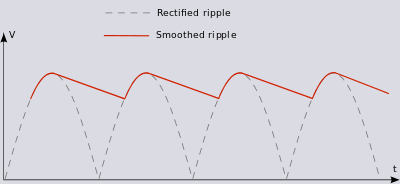- Joined
- Jan 31, 2010
- Messages
- 3,205
Well that settles the issuefor sure; the cap will not/cannot start the bike. Only a battery can do that.I’m fitting a CNW starter as my dodgy knee would prefer me not to use the kickstart.
Well that settles the issuefor sure; the cap will not/cannot start the bike. Only a battery can do that.I’m fitting a CNW starter as my dodgy knee would prefer me not to use the kickstart.
A battery with good cranking amps.Well that settles the issuefor sure; the cap will not/cannot start the bike. Only a battery can do that.
Hi Danny,The cap sends a charge into the windings of the stator to excite the coils and produce current, just as a good battery does. If your setup has an inline capacitor, the blue can is just excess weight.


2MC Capacitor & Lecky IGN
GDay Folks, Most Commando owners will be aware that out of the factory the bike (MKIII 850 in my case) was fitted with a Lucas 2MC capacitor, designed to get the bike going if you've been daft enough to flatten the battery. My question is simply how can this function be maintained when most of...www.accessnorton.com
The stator needs a current to begin putting out it's own. Normally the battery supplies this, but in the event of a dead battery, the capacitor shoots just enough current into the system to excite the coils and get current output rolling.Hi Danny,
I don’t understand your thoughts.
I assumed that because our bikes had permanent magnets in the rotor, unlike car alternators that have windings energised through slip rings and brushes, that it didn’t require an exciter current to initiate charging. In other words I thought our puny alternators would charge from a flat battery.
My Commando with Boyer ignition will start with a very flat battety
All very interesting
al
Yes.You have a Pazon (or something similar) ignition, more modern R/R and can keep the blue 2MC can wired into the loom ?.
Yes. Pull the fuse.You get a flat battery, then what ?
Disconnect the battery ?
Replace the fuse with engine running. Hopefully the battery will then charge.What do you do when the engine starts off the 2MC regarding the battery ?
No. A permanent magnet alternator does not need excitation current.The stator needs a current to begin putting out it's own. Normally the battery supplies this, but in the event of a dead battery, the capacitor shoots just enough current into the system to excite the coils and get current output rolling.
It acts as a filter for noise spikes.Some of the posts seem to suggest the 2MC is doing other things when the engine is running.

I guess they hung the blue can on there for decoration. Take one off a stock Norton, pull the battery and try to kickstart it. If you are correct, it should fire right up. The rotor is a permanent magnet, The stator does nothing until it gets a tickle from the electrical system, either from the battery or the blue cap.No. A permanent magnet alternator does not need excitation current.
In case your factory Norton sound system picks up some fritz?It acts as a filter for noise spikes.
That's because the 2MC is for starting with a dead battery."It acts as a filter for noise spikes."
What do "noise spikes" do in this application? I removed the capacitor in '08 and have never seen any sort of issues - headlight flicker or any other indication of voltage variation other than the normal increase in charging system voltage as the RPM rises from idle.
